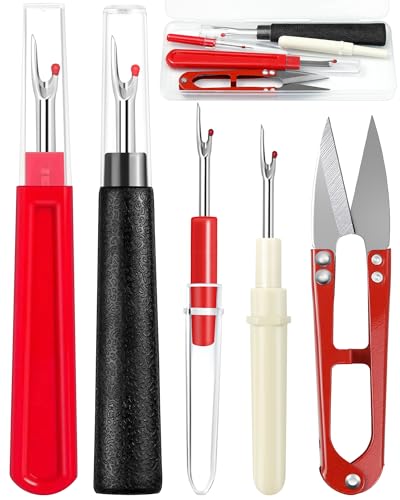Ever thought about crafting your own tote bag? Sewing a zero-waste tote is a fun and sustainable way to carry your essentials. You’ll not only reduce your environmental footprint but also create a unique accessory tailored to your style.
Materials Needed
To sew your own zero-waste tote bag, gather the following materials:
- Fabric: Choose 2 yards of tightly woven fabric, such as organic cotton or linen. Reuse old garments or textiles to minimize waste.
- Thread: Select a durable, matching thread. You’ll need approximately 100 yards.
- Scissors: Use sharp fabric scissors for precise cutting.
- Measuring Tape: Ensure accurate measurements for your tote dimensions.
- Sewing Machine: A reliable machine with a heavy-duty needle is ideal.
- Pins: Have a handful of pins to secure fabric pieces before sewing.
- Iron and Ironing Board: Press seams and fabric for a professional finish.
- Interfacing: Use 1 yard of fusible interfacing to add structure to your tote.
- Handles: Opt for recycled material like rope or sturdy fabric strips, totaling 2 yards.
- Optional: Pockets or Embellishments: Incorporate up to 1 yard for added functionality or decoration.
Materials Overview
| Material | Quantity | Description |
|---|---|---|
| Fabric | 2 yards | Organic cotton, linen, or recycled |
| Thread | 100 yards | Durable, matching color |
| Interfacing | 1 yard | Fusible for added structure |
| Handles | 2 yards | Recycled rope or sturdy fabric strips |
| Optional Additions | 1 yard | Pockets or embellishments |
Ensure all materials are pre-washed to prevent shrinking and color bleeding. Selecting high-quality, sustainable materials supports your zero-waste goals and results in a long-lasting tote bag.
Choosing the Right Fabric
Selecting the appropriate fabric ensures your zero-waste tote bag is durable and eco-friendly. Consider sustainable options and proper preparation for the best results.
Sustainable Fabric Options
Choose fabrics that minimize environmental impact and offer longevity. Here are some excellent choices:
- Organic Cotton: Grown without pesticides, it provides a soft, sturdy material ideal for daily use.
- Linen: Derived from flax plants, linen is breathable and becomes softer with each wash.
- Hemp: Known for its exceptional strength, hemp is highly durable and resistant to wear.
- Recycled Polyester: Made from post-consumer plastics, it reduces waste and offers water-resistant properties.
- Baobab Fiber: A less common option, baobab is biodegradable and sourced from renewable plants.
Each fabric type offers unique benefits. For example, organic cotton is perfect if you prefer a natural feel, while recycled polyester suits those needing extra durability.
Preparing the Fabric
Proper preparation ensures your fabric performs well during and after sewing:
- Pre-Wash the Fabric: Wash your fabric to eliminate shrinkage and soften fibers. Use cold water and tumble dry on low heat.
- Iron the Fabric: Remove wrinkles by ironing at the appropriate temperature for your fabric type. This step ensures accurate cutting.
- Cutting the Fabric: Use sharp scissors or a rotary cutter for clean edges. Measure twice to minimize waste and ensure precision.
- Layout Planning: Arrange pattern pieces efficiently to reduce fabric scraps. Optimize placement by aligning grain lines and considering fabric patterns.
- Marking: Use fabric-safe markers or chalk to trace pattern lines. Ensure markings are clear and won’t wash out during laundering.
Following these preparation steps enhances the quality and longevity of your tote bag, while adhering to zero-waste principles.
Step-by-Step Sewing Instructions
Follow these instructions to create your zero-waste tote bag efficiently.
Cutting the Fabric
- Measure and Mark
- Use a measuring tape to mark two rectangles at 15 inches by 16 inches for the body.
- Cut two rectangles at 4 inches by 16 inches for the handles.
- Layout Planning
- Arrange the fabric pieces on your workspace to minimize waste.
- Align the body and handle pieces to optimize fabric usage.
- Cut Precisely
- Use sharp scissors to ensure clean edges.
- Double-check measurements before cutting to maintain accuracy.
Assembling the Tote Bag
- Pin the Pieces
- Place the two body rectangles right sides together.
- Pin the sides and bottom edges securely.
- Sew the Sides
- Use a straight stitch, sewing 0.5-inch from the edge.
- Backstitch at the beginning and end to reinforce seams.
- Attach the Handles
- Fold the handle pieces in half lengthwise.
- Sew each handle to the top corners of the tote bag, ensuring they are evenly aligned.
- Reinforce the Base
- Turn the bag right side out.
- Fold the bottom edge inside and sew a hem to strengthen the base.
- Final Touches
- Iron all seams for a professional finish.
- Trim any excess threads to clean up the appearance.
By following these steps, you’ll create a durable and stylish zero-waste tote bag tailored to your needs.
Zero-Waste Techniques
Implementing zero-waste techniques ensures your tote bag project minimizes environmental impact while maximizing material use. Follow these strategies to achieve an eco-friendly and efficient sewing process.
Pattern Optimization
Optimize your pattern layout to reduce fabric waste.
- Accurate Measurements: Measure fabric precisely to ensure pieces fit without excess.
- Efficient Arrangement: Place pattern pieces closely, rotating where necessary to utilize fabric fully.
- Template Usage: Create templates to replicate pattern pieces accurately, minimizing errors.
Precision Cutting
Cutting fabric with accuracy prevents unnecessary waste.
- Sharp Tools: Use high-quality scissors or rotary cutters for clean edges.
- Stabilized Fabric: Iron fabric before cutting to avoid distortions that lead to wasted material.
- Cutting Guides: Utilize rulers and cutting mats to maintain straight lines and consistent sizes.
Utilize Scraps
Repurpose leftover fabric to maximize material usage.

- Pockets: Add internal pockets using scrap pieces for extra functionality.
- Accessories: Create keychains, coin purses, or fabric flowers from small remnants.
- Quilting: Combine scraps into a patchwork design for decorative elements.
Multi-Purpose Features
Design your tote bag with versatile elements to reduce the need for additional materials.
- Adjustable Straps: Incorporate straps that can be repositioned or removed, eliminating the need for separate attachments.
- Convertible Compartments: Design sections that can serve multiple purposes, such as pockets that double as handles.
- Reinforced Seams: Strengthen seams to extend the bag’s lifespan, reducing the need for repairs and replacements.
Minimalist Design
Adopt a simple design to ensure efficient use of materials.
- Straight Lines: Use straight seams and minimal curves to maximize fabric usage.
- Limited Shapes: Stick to basic geometric shapes that fit together seamlessly on the fabric layout.
- Streamlined Features: Include only essential features to keep the design straightforward and resource-efficient.
Sustainable Materials Selection
Choose materials that complement zero-waste efforts.
- Organic Fabrics: Select fabrics like organic cotton or linen that are biodegradable and sustainably sourced.
- Recycled Threads: Use threads made from recycled fibers to reduce waste.
- Natural Dyes: Opt for naturally dyed fabrics to minimize chemical usage and environmental impact.
Careful Planning
Plan each step to ensure material efficiency.
- Project Layout: Sketch the entire project to visualize material usage before starting.
- Inventory Check: Assess available materials to avoid over-purchasing and excess waste.
- Sequential Steps: Follow a step-by-step process to prevent mistakes that could lead to discarded fabric.
Zero-Waste Pattern Making
Create patterns that utilize the entire fabric without leftovers.
- Custom Patterns: Design patterns tailored to your fabric’s dimensions, ensuring full usage.
- Adjustable Sizes: Make patterns adjustable to fit different fabric widths and lengths.
- Interlocking Pieces: Design pieces that interlock on the fabric layout, filling gaps effectively.
« Ultimate Guide to Sewing a Wedding Veil: DIY Tips, Tricks & Step-by-Step Tutorial
Why Sewing Reusable Snack Bags: A Green Idea Is the Best Eco Hack You’ll Try Today »
By incorporating these zero-waste techniques, you can create a durable, stylish tote bag while adhering to sustainable sewing practices. Each method contributes to minimizing waste, promoting environmental responsibility, and enhancing the overall quality of your handmade accessory.
Tips for a Durable Tote Bag
Select Sturdy Fabric
Choose fabrics like organic cotton, linen, or hemp for strength. These materials ensure your tote withstands daily use and heavy loads.
Reinforce Seams
Reinforce all seams using double stitching. This technique adds extra strength, preventing seams from splitting under stress.
Use High-Quality Thread
Opt for high-tensile thread to enhance durability. Strong threads reduce the risk of breakage during extended use.
Strengthen Handles
Attach handles securely with multiple stitches. Reinforced handles support heavier items without tearing.

Incorporate Interfacing
Apply fusible interfacing to base and handle areas. Interfacing adds rigidity, maintaining the tote’s shape over time.
Pre-Wash Fabric
Pre-wash materials to eliminate shrinkage and enhance fabric integrity. Properly prepared fabric maintains the tote’s structure after repeated washes.
Trim Excess Threads
Trim all excess threads after sewing. Clean edges prevent fraying, extending the tote’s lifespan.
Care and Maintenance
Follow care instructions to preserve fabric quality. Regular maintenance keeps your tote looking new and functioning well.
Optimize Pattern Layout
Arrange pattern pieces efficiently to minimize strain on seams. Efficient layout reduces fabric waste and enhances overall durability.

Use Recycled Handles
Choose recycled materials for handles to maintain sustainability. Recycled handles offer eco-friendly strength without compromising durability.
Add Pockets
Integrate pockets for additional support and functionality. Pockets distribute weight evenly, reducing stress on the tote’s main structure.
Employ Minimalist Design
Adopt a minimalist design to focus on essential elements. Simplified designs reduce wear points, increasing the tote’s longevity.
Secure Bottom Corners
Reinforce bottom corners with additional fabric layers. Strengthened corners prevent tears when carrying heavy items.
Conclusion
You’ve taken a great step toward sustainability by creating your own zero-waste tote bag It’s not just a practical accessory it’s a statement of your commitment to the environment Enjoy the process of sewing and take pride in using something you made with care Your personalized tote will serve you well and inspire others to adopt eco-friendly habits Keep crafting and making a positive impact one project at a time


















